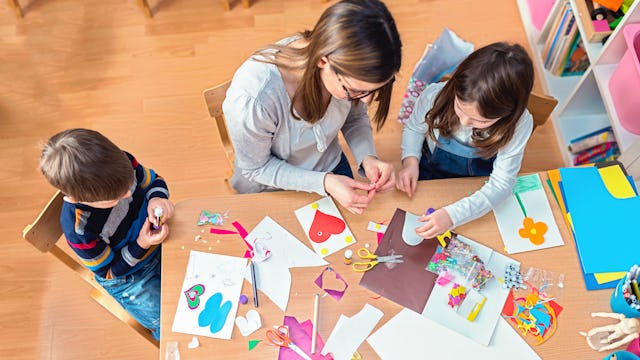Here's What Happens When A School Invests In The Arts Instead Of Security Officers

Arts education helped one underperforming school show significant improvement
Music, art, and theater are arguably as important in our school systems as science and math, most educators believe. And yet, they are some of the first programs that aren’t seen as “relevant” in our kid’s classrooms, and funding often suffers as a result.
But it doesn’t have to be this way. Schools that prioritize innovation are putting arts in the forefront and it’s making a real difference for students. Take Orchard Gardens Elementary in Roxbury, Massachusetts, for example. The principal, Andrew Bott, arrived at one of the worst-performing schools in Massachusetts when he started. Instead of going the safe route, he cut funding for the school security staff altogether and instead invested in the arts program.
Listen, I’m sure this doesn’t come as a shock to most parents but not all kids learn the same. I know, I know, it’s still a concept a lot of educators are trying to get their heads around. But according to Learning Lift Off, arts programs can help with creativity, improved academic performance, confidence, and decision making. And all it takes to implement them is the priority of school leaders.
Orchard Gardens was one of eight schools targeted for a new pilot plan created by President Obama’s Committee on the Arts and Humanities (PCAH) to prioritize arts in education. So, Bott promptly replaced the majority of teachers and recruited new ones whose expertise was in the arts. “This was a far better investment,” said Bott, “than spending a quarter of a million dollars on six people to chase a few kids around who are misbehaving,” KQED reported.
What happened next was nothing short of spectacular. The school, which has more than 800 students, most of whom qualified for free or reduced lunches and were learning English as a second language, struggled with the standard way of learning. They had five principals in their first seven years and every year half the teachers didn’t return to their classrooms. Test scores were in the bottom five percent of all Massachusetts schools and this was an elementary school. Once Bott introduced arts as a priority, students “came alive and graduated with confidence to high school and beyond,” they reported.
The school bought instruments, had artists come in to work with kids, and ran workshops for teachers and parents that placed importance on creation. The hallways were soon coated in student artwork, which gave the children a sense of pride and ownership. “Kids do well,” Bott said, “when you design and build a school that they want to be in. Having great arts programs and athletics programs makes school an enjoyable place to be and that’s when you see success.”
For this school and others like it, it’s all about motivating kids to learn however they learn best. “The problem,” they said, “is not usually the students; it is the system. Change the system in the right ways and many of the problems of poor behavior, low motivation, and disengagement tend to disappear. It can be the system itself that creates the problems.”